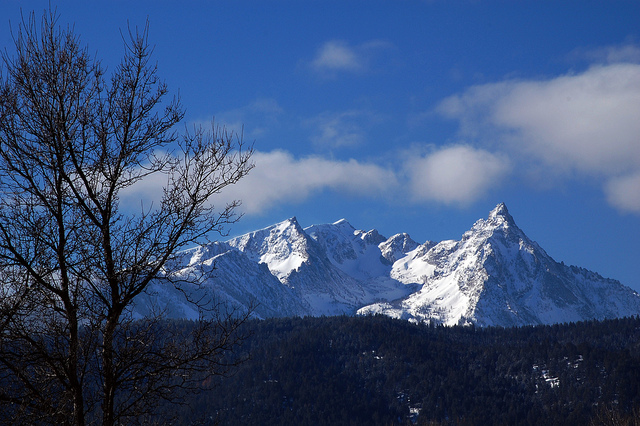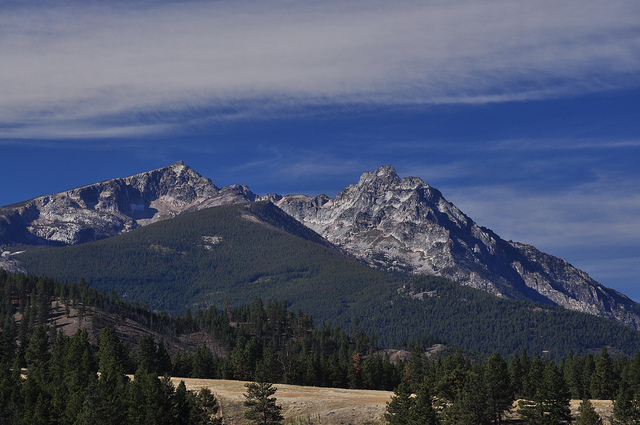Trapper Peak
Key information: Trapper Peak 
- A short and relatively straightforward walk up to the highest summit in the Bitterroots, the horn-like Trapper Peak
- Panoramic views of the fir-covered, snow-capped peaks of the surrounding wilderness
Walkopedia rating
- Walkopedia rating82
- Beauty33
- Natural interest16
- Human interest0
- Charisma33
- Negative points0
- Total rating82
Vital Statistics
- Length: 19.3km
- 5 hours
- Maximum Altitude: 3,095m
- Level of Difficulty: Strenuous

WALK SUMMARY
This is a short and relatively straightforward walk up to the highest summit in the Bitterroots, the horn-like Trapper Peak, with panoramic views of the fir-covered, snow-capped peaks of the surrounding wilderness. Mountain goats and bighorn sheep are sometimes known to frequent the area, and some uncommon and beautiful wildflowers grow along the higher parts of the trail.
Although the views can be great, most of those who climb Trapper do so simply because of its status as the highest peak in the area, as the logbook at the summit testifies. The scenery can be less varied than that of other walks in the Bitterroots.
The trailhead for Trapper Peak is reached by driving around 15 miles up the west fork of the Bitterroot River, to the Laverne Creek Road. Look out for signs to 'Trapper Peak' (don't confuse with Trapper's Creek!) once you have turned off, you will reach a good space for parking - the walk starts here. It is a fairly steep climb, gaining over 300m a mile, and goes on for about four miles to the summit.
Starting high on a ridge overlooking Boulder Creek and the Bitterroot River, the trail then mostly winds through trees, growing steadily more stunted as the altitude increases. Once you have emerged from the last of these onto a boulder field the path heads towards a saddle, where it dawdles to a halt. Around half a mile of climbing, and some scrambling, takes you along an easily traversed ridge to the peak itself. After a suitable amount of time contemplating the view (and your achievement in reaching it), retrace your footsteps to get back to the trailhead.
Most climb Trapper Peak from late spring onwards, when there is generally no snow on the access roads and you can park at the trailhead. If you can't get to Laverne Creek Road then your hike is considerably lengthened.
See our Bitterroot Mountains page for more, including detailed practical information.
Other accounts: share your experiences
Your comments on this walk, your experiences and suggestions, and your photos are very welcome. Where appropriate, you will be credited for your contribution.
Safety and problems: All walks have inherent risks and potential problems, and many of the walks featured on this website involve significant risks, dangers and problems. Problems of any sort can arise on any walk. This website does not purport to identify any (or all) actual or potential risks, dangers and problems that may relate to any particular walk.
Any person who is considering undertaking this walk should do careful research and make their own assessment of the risks, dangers and possible problems involved. They should also go to “Important information” for further important information.
Anyone planning an expedition to this place should see further important information about this walk.
Responsible travel matters, a lot. How you travel will make a real difference - for better or worse. PLEASE consider this when making plans. Read more







